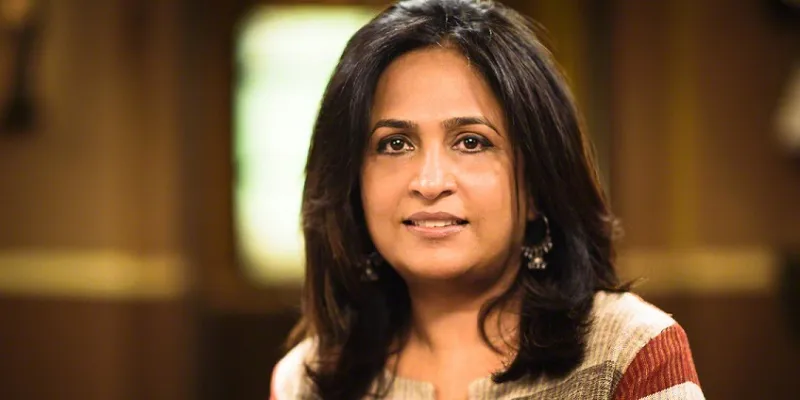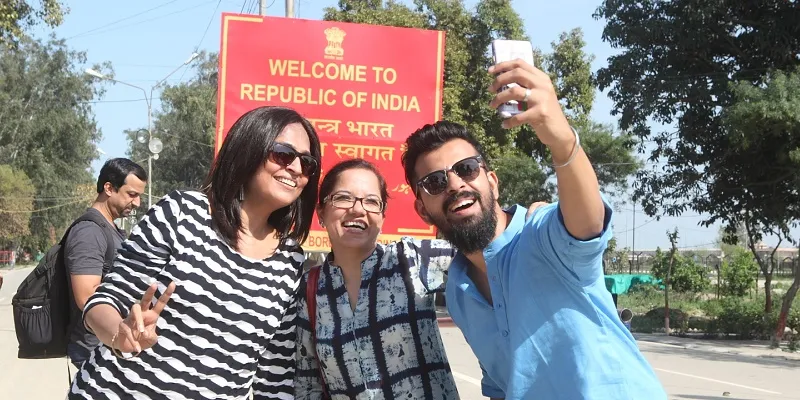How Shailja Kejriwal is using the magic of movies to bring Indians and Pakistanis closer
Shailja Kejriwal is one of the most accomplished names in the field of Indian media and entertainment. Her repertoire ranges from building up the Star brand in India through the very popular K series of soaps in the 2000s to introducing Pakistani talent to the Indian audience through her brainchild Zindagi channel in 2014. Shailja (48) has taken up the mission of bring the two countries further together by putting together a project of short movies called Zeal for Unity – an apolitical peace initiative bringing together six Indian and six Pakistani directors on one common platform. Popular names like Nikhil Advani, Tigmanshu Dhulia, Bejoy Nambiar, Aparna Sen and Tanuja Chandra comprise the Indian side. From the Pakistani side, stalwarts like Khalid Ahmed, Oscar Winner Sabiha Sumar, Siraj Ul Faque, Meenu Farjad and Shahbaz Sumar are participating. The initiative was aptly launched at the Wagah border in March this year and the films will be released soon.
Shailja wants to promote the category of filmmaking called ‘mainstream alternate,’ with her first feature film as writer and producer, Madaari starring Irrfan Khan, which will release in a couple of weeks. Her mission is to make entertainment socially relevant and that is the underlying theme of all her current projects. Her creative journey has aimed at merging creativity, commerce and cause.

Growing up in a quaint world replete with stories and songs
Shailja was raised by her maternal grandmother and uncle in an old-world neighbourhood of Kolkata. Hailing from a Marwari family, she grew up among neighbours who were Bengalis, Maharashtrians, Biharis and Andhraites. In the early seventies, the homogenised mall culture was yet to set in and she was influenced by the amalgam of cultures around her.
“My uncle loved the radio, I remember being glued to a radio programme called Inspector Eagle that aired detective stories. Our old cook was a Hindi film buff who would see every movie that was released and then in the evening while he cooked, I would sit next to him in the kitchen and listen to the stories of the films. My cook’s favourite actor was Jeetuji (Jeetendra), so he was actually most thrilled when Ekta (Kapoor, Jeetendra’s daughter) and I worked together many years later,” she recalls. Shailja then explains the influence her grandmother had on her.
“My grandmother would tell me stories from the mythologies during evenings. At night before sleeping we would listen to my grandmother’s favourite Hindi movie songs on the gramophone and she would sing along ‘Jaane woh kaise log the jinke pyaar ko pyaar mila’. Yes Guru Dutt! My grandmom had great taste,” she exclaims.
Her parents who lived in Mumbai and visited a couple of times a year would bring her books of Hans Christian Anderson and Enid Blyton. Later on, her fascination for stories continued at Jadavpur University and the department of Comparative Literature where she did her graduation and post-graduation. She studied everything from Greek Tragedy, Sanskrit drama, Shakespeare, Moliere, Racine, to the modern writers Tolstoy, Kafka, Marquez. Her father would tease her saying that she went to college to read fiction.
“Growing up in Kolkata, one cannot stay away from art and culture,” says Shailja. “You are surrounded by film clubs, theatre groups, music concerts, literature festivals and book fairs. One doesn’t really think about it, it just is a part of your existence. So exposure to the auteurs like Satyajit Ray, Ritwik Ghatak, Mrinal Sen, Ingmar Bergman, Federico Fellini, Michelangelo Antonioni, Charlie Chaplin, Bimal Roy, Guru Dutt, Shakti Samanta and Manmohan Desai contributed to a rich and beautiful childhood. Kolkata also had an amazing theatre culture,” she explains.
A Mentor and Story-teller in Subroto Mitra
Shailja describes Subroto Mitra, who shot Pather Panchali and many of Ray’s other classics, as a magician and genius. A cinematographer friend of hers needed to borrow a camera from Mitra and since she was a huge fan, took her along to meet him. Shailja was around 22 then and though she aspired to be a writer, she was fascinated by all aspects of films and theatre and requested him to take her as a student. Rather than learning cinematography, she ended up spending a whole year with Mitra listening to the stories of making films with Ray. “I saw the line drawings of each frame of Pather Panchali which he had preserved, and heard from dada (brother) about the fire that broke out on the set of Teesri Kasam.”
Her career started with writing for a documentary on ‘literature in cinema’. She soon wrote the screenplay for ten short children’s films. During the making of these films she started learning production as well as editing. Initially, Shailja hated production and handling money and absolutely loved editing and the fact that one can change and create a completely new narrative on the edit table. But as time progressed she saw how the producer gets the various creative and technical aspects of plays and films together to form the cohesive end product and can even influence societal opinions through their work.
Shailja moved to Mumbai in 1998 and conceived and produced an exciting project called STAR BESTSELLERS, a series of short films made by debut filmmakers from Film and Television Institute of India (FTII) and National School of Drama (NSD). There was no looking back after that, and she set off on her mission of making a difference through her work.
Two religions of India and Pakistan – cricket and movies
Shailja feels that in the sub-continent lives, dreams, moods, fashion, conversation and existence get defined by cricket and movies. Since television has penetrated almost every household, an average Indian and Pakistani spends at least three hours a day watching this medium.
Shailja says, “That’s more time than anyone spends with family or friends. What he/she sees in these three hours will certainly influence the mind. We can either see the news channels spewing hatred and bringing the two countries to an almost war like situation, or we can have positive messaging through cinema, TV and cricket. A channel like Zindagi when beamed inside every home in India, shows us that our neighbours are regular people and not terrorists as news channels claim. A Bajrangi Bhaijan brings tears to every eye in India as well as Pakistan. Dhoni and Sachin are respected on both sides as are Afridi and Akhtar.”

Women in the entertainment industry
According to Shailja, the entertainment industry is no different from any other and there has been a huge increase in women working in all industries in the last decade. But the downside is that women are seen as work horses up to the mid-level and patronised at senior levels. The creative side in the television industry has many women in top positions, which is stereotyping in a sense. Creativity is feminine and non-threatening but not revenues or business. But the few women directors and producers at the top are indicative of changing times.
Dreams and plans
Shailaja’s big dream today is “to produce something that will inspire social change and leave a lasting impression.” She says, “Ordinary people doing extraordinary things inspire me. When I hear about the Dalit man who dug a well for his wife so that she wouldn’t have to walk miles for water, or the man who single-handedly converted hundreds of acres of land into a forest – stories and people like these inspire me.”







